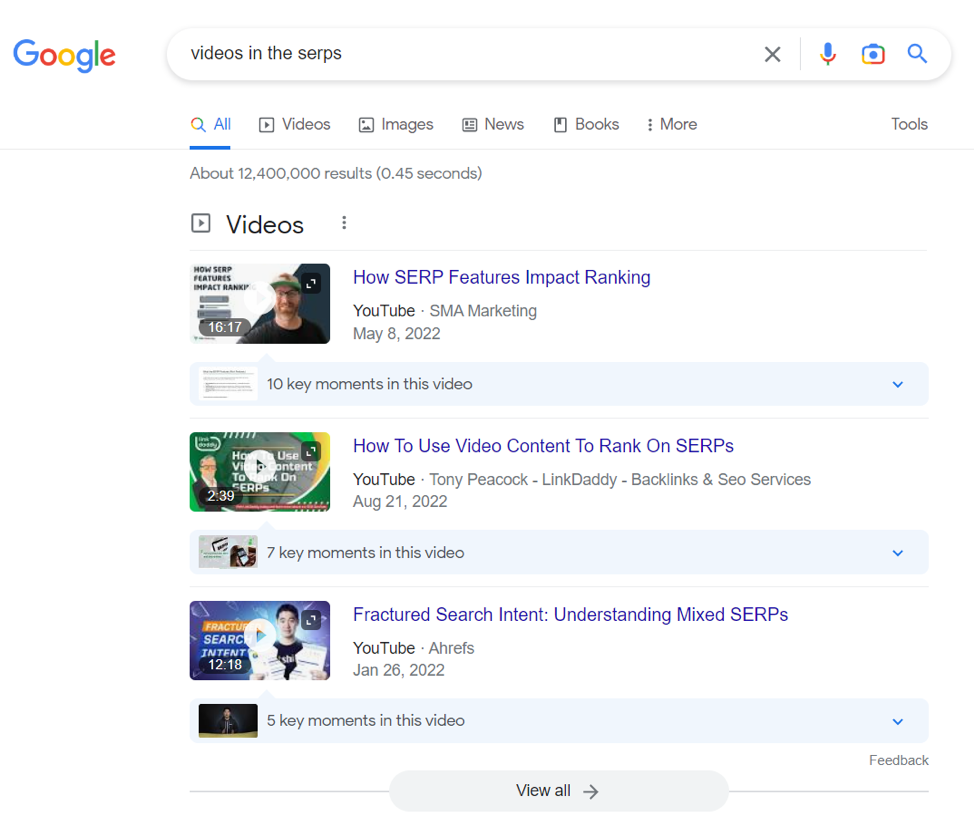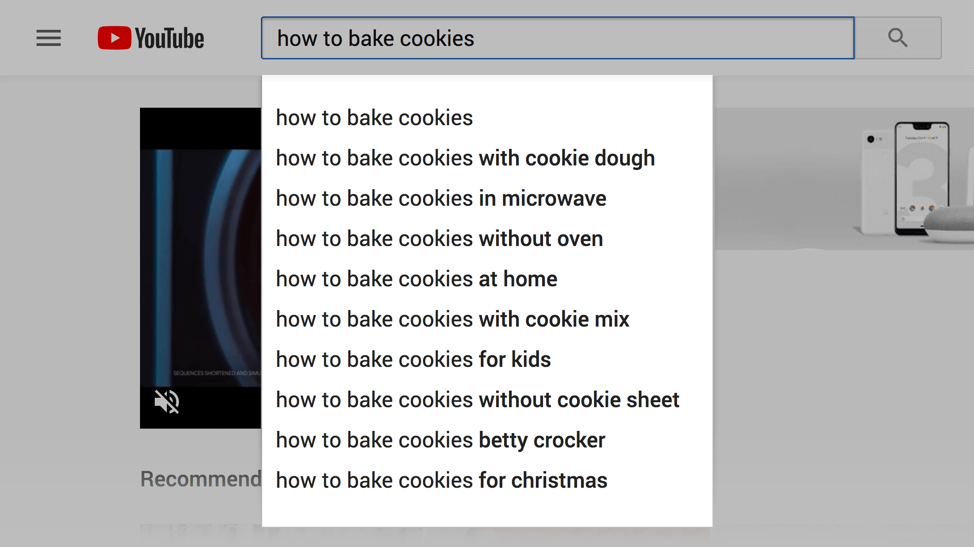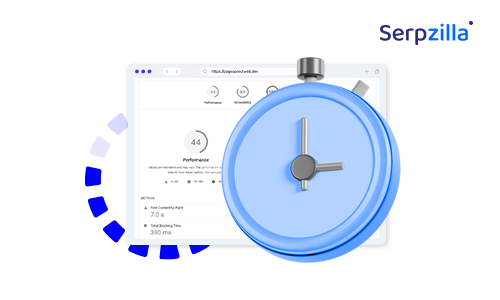Video is one of the leading forms of content on the web today. It is an increasingly important part of digital marketing as more and more people rely on video to consume information and make purchasing decisions. Videos can be used to engage and educate your audience, increase brand awareness, and drive conversions.
Further, videos help increase visibility and reach because they’re highly conducive to sharing. Video marketing is a powerful tool showcasing products in action as well as demonstrating their features and benefits. This holds true across B2C and B2B businesses – online and offline.
Purposeful videos are critical in making brand-customer connections. Video content has been shown to be more engaging and recallable than text, leading to higher conversion and customer retention rates.
Since all marketing is digital today, you need to integrate the objectives of your video marketing campaigns with your overall SEO strategy. This is crucial if you want to take advantage of the benefits video SEO offers in branding, engagement, conversion and retention.
What Is Video SEO and Why Is It Important?
Video SEO is the process of optimizing videos (and URLs with video in them) to rank in search engines and video platforms for the keywords you want to associate with them.
It involves creating video metadata that enables search engines to understand your video content as well as crawl and index your videos by bridging the text-audio visual gap.
Video SEO gives you one more avenue in your SEO efforts to get higher visibility in the search results on almost any web platform.
But why should you put in extra efforts in optimizing videos for search?

In the last few years, videos have gained increasing importance in the content marketing funnel. Brands have realized the importance, flexibility and capabilities of video and are going all out to create long and short video clips that they can use in social media, webinars, blogging and online PR.
That’s the business point of view. Simultaneously, Google is also moving away from “keywords” and focusing on “intent” of the searcher. From its Hummingbird update onwards, the Google SERPs are constantly shifting to show videos in the universal results. In its quest to help users find more and better information, Google promotes video content that answers “how to” questions in its SERPs.
The Benefits of Video Marketing
Businesses have seen great benefits from creating and promoting video content:
Increased visibility in the SERPs
As discussed, Google and other search engines are populating the search results with more and more videos. Getting video SEO correct will improve your ranking in SERPs, making it more likely that users will find and watch your videos. Eventually, this will help drive more visitors to your website.
Greater audience reach and brand awareness
Video is a versatile format. It’s easy for people to watch a video than read through blobs of text. That makes them shareable and interesting. This means thoughtfully created videos can exponentially increase your brand visibility and reach.

Higher engagement and click-through rates
Videos are highly engaging and often get higher CTR than text-based content. This can lead to more views, likes, shares, and comments, which can help increase the “connect” of your messaging.
Improved user experience and website stickiness
Videos can provide the ideal mix of engaging and informative content. When you have your viewers’ attention, you can keep them on your website longer, increasing the chances of conversions and sales.
Implementing Effective Video SEO Strategies
More than 500 hours of video content is uploaded every minute. Moreover, Google, YouTube, and pretty much every other platform is tweaking its algorithm to showcase only the most useful and actionable videos that their users might prefer and enjoy. In such a competitive market, how can you make sure your videos rise above the din and connect with your audience?
Choose relevant keywords
Researching and selecting keywords before you create the video content is essential. After you publish the video, you must also use these same keywords in your video title, description, and tags.
Most SEO tools today give you the option to research keywords for YouTube as well as video in general. YouTube itself is a good source of keywords, thanks to its suggestions.

Write compelling video titles and descriptions
Writing persuasive and informative titles and descriptions for your videos will lead to an increase in CTR. A better CTR will trigger Google’s and YouTube’s algorithms, leading to even better CTR. Your titles and descriptions should be clear, concise, and contain all the semantically relevant keywords.
Choose the best hosting platform
Choosing to host your video on YouTube might get less direct traffic to your site. But it also gives you more visibility. On the other hand, if you choose a paid platform like Wistia, it automatically inserts SEO meta tags, creates a video sitemap, indexes the page on which the video is embedded and drives direct visits to your landing pages.
Optimize video file names
Your video’s filename is also a source of information for Google on what it is about. Filenames should be descriptive and contain relevant keywords about the content of the video.
Create transcripts and closed captions
Creating transcripts and subtitles for your videos makes them more accessible to a wider audience and also helps search engines understand in detail what your videos are about. Most importantly, search bots understand and crawl text much faster, so you don’t have to worry about that.
Embed videos on your website and using schema markup
Embedding videos on your website and using schema markup can help search engines understand what your video is about. JSON-LD is an easy way to annotate and structure video-related meta data using the schema.org vocabulary.
Promote videos on social media and other platforms
Sharing your videos on platforms like YouTube, TikTok, Instagram, and other social networks will improve brand awareness and drive more visitors to your website. It will also induce people to actually search for your brand – a positive signal for Google.
Measuring the Success of Video SEO
As with any marketing channel or format, you need to establish key metrics that tell you whether your video SEO is successful or not.
Track video views and engagement metrics
By tracking video views, likes, shares and comments, you can measure your video SEO success in terms of engagement. These metrics provide insight into how well your videos are resonating with your audience and help you identify opportunities for improvement.
Comments can also give you more ideas on what your audience is actually looking for.
Analyze traffic and conversion data
The biggest measure of the success of your video SEO in terms of website traffic and conversions. Data such as bounce rate, time on page, and conversion rate help you understand how your videos are performing. Google Analytics lets you see metrics for on-page visits and engagement as well as configure play and stop events for videos.
In Conclusion
Video SEO is a key strategy for businesses of all sizes looking to increase awareness, engagement, and conversions. By optimizing video content for search engines, businesses can increase the discoverability of their videos and drive more traffic to their websites. It is the new way to provide a better user experience to audiences and customers alike.









